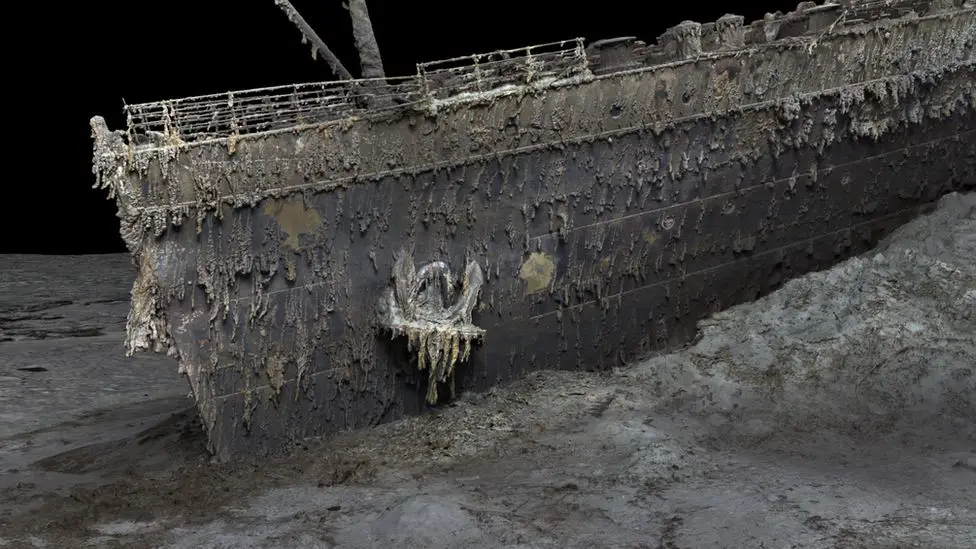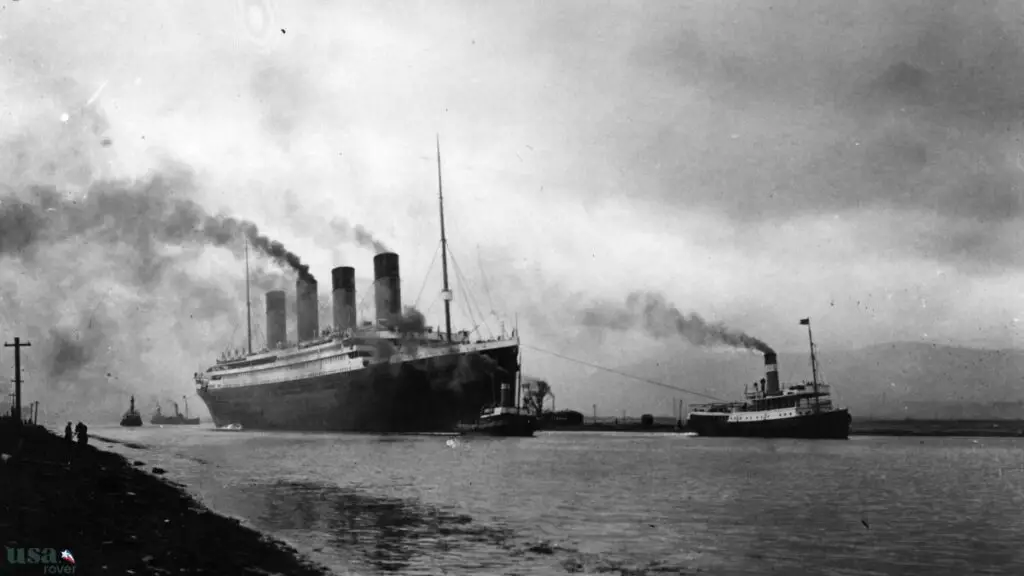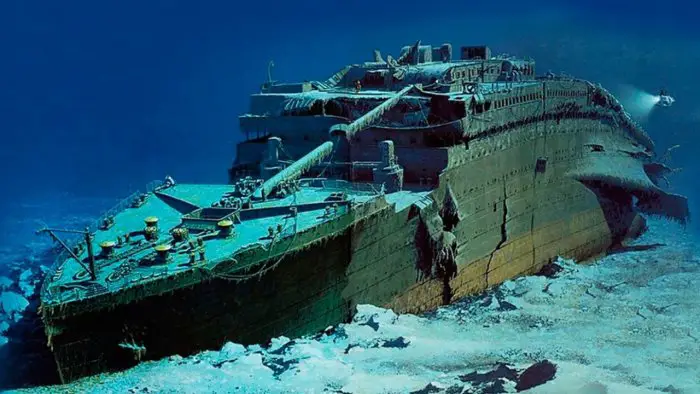The sinking of the Titanic in 1912 was one of the most tragic maritime disasters in history. Over 1,500 people lost their lives when the “unsinkable” ship hit an iceberg and sank on its maiden voyage.
Since then, much debate and speculation have been about whether the Titanic will ever be raised from the bottom of the ocean.
There have been several attempts to raise the Titanic in the past, but all have been unsuccessful. Despite technological advances, the sheer size and weight of the ship, combined with the depth of the ocean where it lies, have made it a daunting task.

Can The Titanic Be Raised?
It is highly unlikely that the remaining Titanic will ever be raised to the surface. Owing to different factors like the depth of the ocean floor, the natural damage due to prolonged exposure to acidic salty ice cold water, microbial growth, economic constraints, and lack of advanced technology or equipment, the chances of Titanic ever seeing the surface is negligible.
It was in 1985 that Robert Ballard founded the Titanic wreck. He mentioned that any attempt to lift the vessel from the ocean floor would destroy it due to the damages it suffered.
Why can’t the Titanic be raised?
The Titanic lies at a depth of about 12,500 feet or close to 3.8 km in the North Atlantic Ocean. Over the past decade, the Titanic has been subjected to corrosion, disintegration, natural decay, and colossal structural damage. Trying to lift it from the ocean floor will make the vessel collapse and disintegrate completely.
1. The Depth Of The Wreck Site
The Titanic rests on the ocean floor at approximately 12,500 feet (3,800 meters). Raising the Titanic from a depth like this poses immense logistical and technical challenges making almost every salvage operation ineffective.
Another thing to note is the water pressure at the wreck site.
The water pressure below 12,500 feet below the surface is about 400 atm or 6000 psi. This level of pressure at the ocean’s depth crushes the Titanic and has already caused a lot of damage, making it incredibly challenging to lift the remains.
2. Damage Over The Past 100+ Years
Over the past decade, the Titanic has been resting on the ocean floor. Due to extreme pressure, natural decay, corrosion, and exposure to salty water, significant parts of the vessel are deteriorated.
Any attempt to lift the Titanic will make it disintegrate into multiple pieces in no time. The structure can no longer hold the ship altogether.
3. Cost
The cost of developing extremely advanced technology to lift the Titanic from the ocean floor will be multiple hundred million.
The astronomical cost involved in the process, technical advancements, and extraordinary amount of resources, equipment, and expertise makes it economically unfeasible for any organization or government to carry out a salvage operation.
4. Sheer Size Of The Titanic
The Titanic is massive.
The oceanliner is 269 m long and 28.20 m wide, weighing anywhere north of 50,000 tons.
The current technology, resources, and equipment are nowhere close to lifting weight as high as this, and that too, from the ocean floor, which is 12,500 feet below sea level.
In short, lifting the Titanic from the ocean floor is almost impossible; even if such a technology is developed, the economic factor and astronomical cost to carry out the operation are a big letdown.

Attempts To Raise The Titanic In The Past -Explained
Ever since 1985, after discovering the wreck site of the Titanic and locating the same, several people have conducted expeditions to retrieve artifacts and the remaining of the vessel.
Even many have managed to retrieve parts of the ship, including part of the hull, personal belongings of the guests, and more.
Several of these retrieved artifacts are exhibited in various museums across the globe.
But to date, it was not possible to lift the entire ship.
The most significant artifact that the RMS Titanic Inc. company managed to lift is that part of the hull which is approximately 3.7 x 7.9 meters in size and weighs 15 tons.
According to NOAA, the RMS Titanic conducted several salvage expeditions in 1993, 1994, 1995, 1998, 2000, and finally, 2004.
Various artifacts like Wallace Hartley violin, the original deck chair, the launch ticket, the menu from the first meal abroad the Titanic, etc. has been sold in auction in the following years.
It is estimated that the Titanic Museum in Belfast made £4.2 million in profit in the year 2019. The museum recorded a post-tax profit of approximately £3.3 million.
Who Found Titanic Wreck?
Robert Ballard, an oceanographer and American Navy officer, found the RMS Titanic wreck in 1985, 400 miles off the coast of Newfoundland, Canada.

The RMS Titanic ocean liner hit an iceberg, collapsed into two and sank in the late evening of 14 April 1912. It was almost after 73 years that Ballard managed to locate the wreck site.
Wrap Up
In conclusion, the question of whether the Titanic will ever be raised remains shrouded in uncertainty and speculation. While it may capture our imaginations and fuel our curiosity, the practical and technical challenges, along with legal and environmental considerations, make the prospect highly unlikely.
The deteriorated condition of the Titanic, resting at extreme depths in the North Atlantic, presents immense obstacles that would require an extraordinary amount of resources and expertise to overcome. The cost alone, coupled with the fragile state of the ship and the need to adhere to international agreements protecting the wreck site, render the endeavor economically unfeasible and ethically complicated.
In short, the Titanic will never see the blue sky again!
